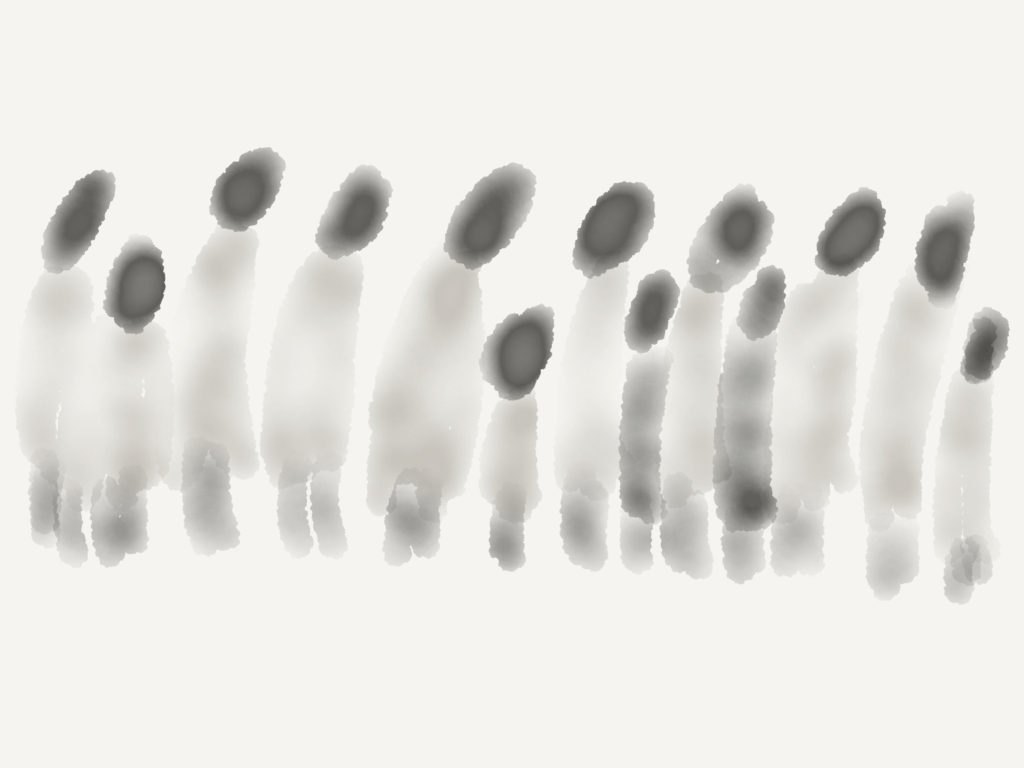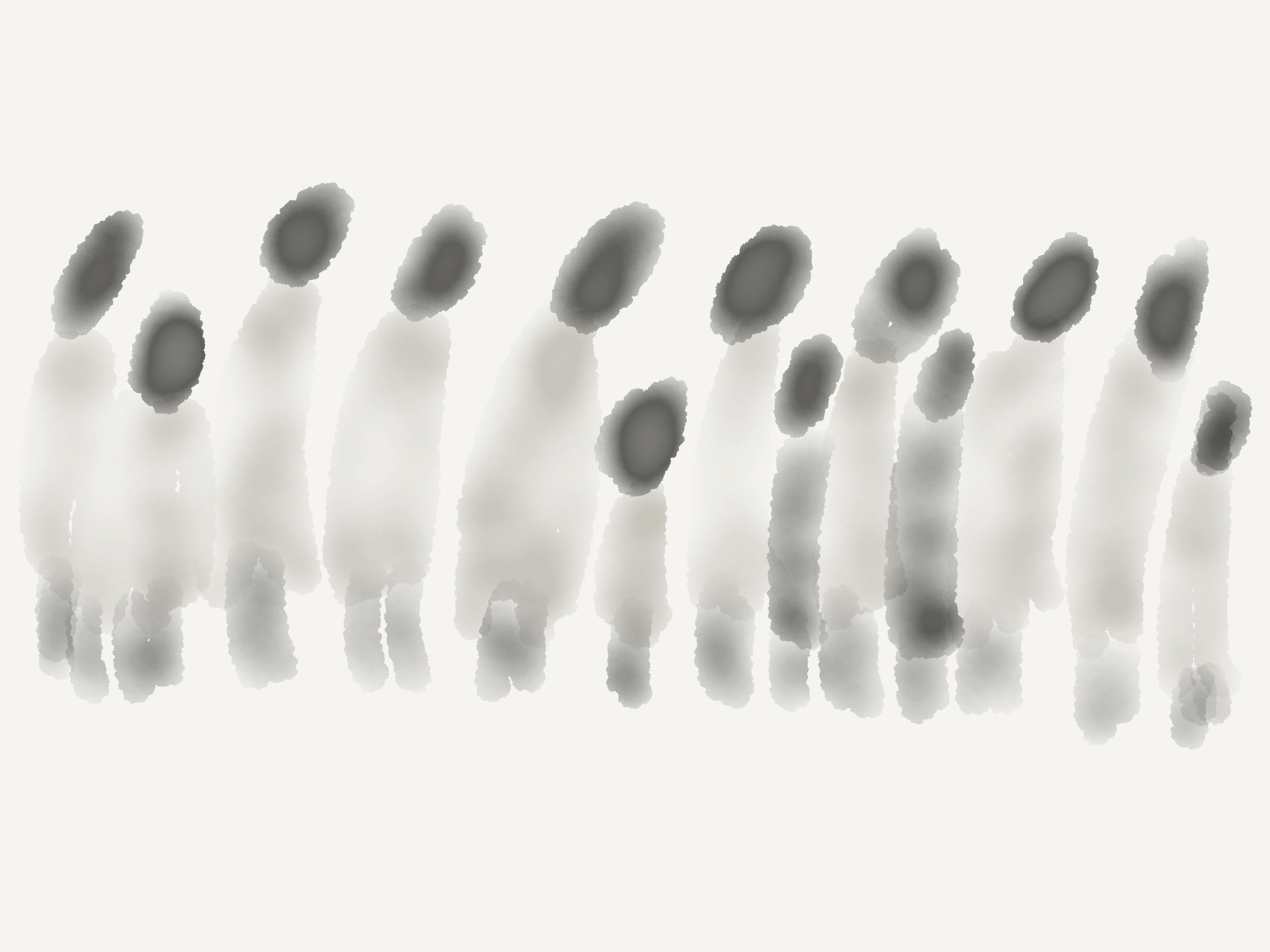
© Frank Sandbye-Ruud 2017
Imagine a small family.
A father, a mother, and two small girls, lets say they are 2 and 4 years old. Let’s give them names. The father, who is a great worker, has a limp. He was born with a bone disease, which made his right leg a little shorter. His name is Jakub. His wife Sally is a housewife who tends to their two small girls, Lea and Ester. Both have inherited their mothers dark and curly hair. Their families immigrated to Lublin after Tsar Alexander I of Russia limited the Jews rights in the Russian area.
Their family were forced to assimilate and move into the town of Lublin. Because of this, they had left their former Hasidic tradition in Russia. They tended the Synagogue for all important matters, and celebrated the Shabbat in their simple home. Work was hard, but they never starved or the children went wanting for clothes or comfort.
Their apartment is located just below Lublin Castle in the Jewish district. It is a modern building, normally not within the price range of a young couple. The inheritance left from Jakub’s parents made it possible for them to purchase the small apartment.
It is Friday August 25, 1939, the family is gathering around the small table to celebrate shabbat. The children are play fighting and the mother tells the girls lovingly to sit still and be quiet. Jakub and Sally looks at each other and he takes her hand smiling.
It is Friday September 8, 1939. Nobody is celebrating shabbat. The attacking Germans have started a deadly bombardment of the city, destroying many buildings.
It is Monday September 18, 1939. The triumphant German forces enters the city after a short battle in the suburbs. Trucks with German soldiers and motorcycles are passing Jakub in the street on the quick trip to the market. He got less than half what he needed, almost nobody dared being in an open area.
Jakub’s workplace is raided by the German police, and the foreman severely beaten. «Verdamte Judeschwein!!» they sneer as they beat on the old man with the batons they carry. Nobody knows what is going to happen. Their rabbi has been attacked in the street and have his hair and beard cut of. The prayers at the synagogue is halted. Public worship is forbidden.
It is summer 1940, Jakub and his family are forced into the new Jewish quarter. One summer day German police came banging on the door, giving the family 10 minutes to pack. They are allowed two suitcases. Sally packs clothes for the girls, food, a family album, pictures of the lon gone parents and grandparents, the precious family Hanukiah, children’s toys, a warm blanket and Jakub and hers extra clothes. Pushed by the shouting police they ran terrified into the streets. Trucks are waiting. The girls is crying in fear.
The ride was short once the truck was filled up.
It was dark when they arrived, they didn’t know where they were. They were forced into a doorway and into a building. A Jewish policeman stands by a doorway on the third floor and points inside the apartment. Inside the small apartment there are already nine other people, all strangers. They are showed into something that was the former living room and told to settle down. This was their new home.
The next day they look out of the window and recognized the area as being close to the Grodzka Gate.
Life is hard, they are confined to a small area, German police is guarding the entrances to the area, nobody is allowed outside. Food is scarce, but they get help for the small girls by other tenants so they get by. Jakub is forced to work in a coal distributing site just on the corner. The work is hard, but he manages.
It is March 1941. There is suddenly an influx of many German soldiers and police everywhere. The rumors are that they are going to be arrested. There is great anxiety in the Jewish area. The Germans start to seal of the streets with barbed wire. Arbeitskommandos are set up every day. All Jews able to work are forced to construct walls, and seal of the area. The Podzamcze Ghetto, Lublin Ghetto is a fact.
The steady stream of Jews flowing into the ghetto makes the situation deteriorate fast. People are starving and freezing to death. The gray masses start to roam the streets. Starving, half conscious people stumble aimlessly around the streets of the ghetto.
Jakub and Sally are just shadows of their former self. Every extra part of food goes to Lea and Ester.
It is Chanukah 1941. The tenants in the apartment gather together in the cold apartment and lights the candles. One of the older Jews, a former lawyer from Lublin recites the blessings as the candles are lit. The grey mass huddle together to bask in the little warmth the candles give off. Except for the prayers, all are quiet. Hunger, fatigue and fear have taken away the spirit of many.
Lea and Ester is now 5 and soon 7 years old. They are as children most, but the situation takes a toll on even small children’s spirits. It is now Friday 13 March 1942.
It is now 10pm on Monday March 16, 1942. The ghetto is surrounded by SS and the Trawnikis. The main street in the ghetto is lit up by lights, which is very unormal and is shocking to those forced out of their houses. Jakub, Sally, Lea and Ester are told to pack immediately. Everyone are allowed to take 15 kg of luggage on the journey along with valuables and money. RAUS! RAUS!! GET OUT! Terrified they pack and grab the two girls. They are chasen down the stairs and into the streets. Inside the building screams of terror and shots can be heard. Soldiers in black uniforms are severely beating an elderly couple who fails to follow orders. One officer pulls out his pistol and fires bullets into their faces.
They have gotten accustomed to terror during those terrible months inside the ghetto. They have all seen people being humiliated, beaten and killed for the smallest things. But nothing could prepare them for what they are now seeing in front of their eyes. The soldiers are in a frenzy, screaming orders with spit flying from their lips. More people are shot right in front of them, most elderly and sick. People comes out of the doorways carrying their sick. They are torn from their arms, and shot on the spot. Women, children, men and elderly. More shots ring from the buildings. Jakub and Sally does their best to cover the girls eyes and ears, but both are frightened out of their mind.
Jakub, Sally, Lea and Ester are with hundreds of other people forced on a march in the dark. They can see the lights from the Lublin castle. Now they see The Maharshal, the Great Synagogue appearing in front of them. The doors are open and they are forced inside. The floor of the once great synagogue is crowded with people and luggage. People are sobbing, many are bleeding. The doors are slammed shut.
There are guards inside, orders are given that nobody is allowed to stand up, those who do will be shot!
The night is spent in terror. The girls fall asleep out of pure exhaustions, but they are constantly awoken by guards screaming. Muffled shots can be heard outside. The terror of the gray mass inside the synagogue is tangible. It can be tasted on the tongue, it can be smelled. The smell inside is overpowering. Fear, urine, blood, sweat, and soon a stench of people soiling themselves.
In the morning the doors are slammed open, orders are screamed again. RAUS! RAUS!! GET OUT!
Its now Tuesday March 17, 1942. Today Ester is 7. They are forced on a march together with 1500 other Jews. The people melt together in a grey mass, moving slowly. Their faces are drawn, people can barely lift their feet. They are surrounded by Trawnikimänner who uses every reason to beat the moving people with their rifle butts. SCHNELL!! SCHNELL!! FAST!!
They pass several houses, people are watching the grey mass moving like a snake in the streets behind curtains and blinds. The guards shoots at windows if they see anyone looking out.
Wiesława Majczak observes this form his window. He puts it into words.
«I saw the route of the Jewish people, walking to the platform at the slaughterhouse. The crowd kind of streamed by. It wasn’t that they just walked past – they walked, walked and walked. There was this clatter – thats how I remember the sound. The clatter of shoes on the cobblestone. And talking and then also the shooting. I watched it all from the second floor so it seemed to me I could see heads and bundles only. It was if the cobbled stones went by the heads round and the bundles round. It was if the street walked by, the cobblestone itself.»
The march takes about 50 minutes. Those who stumble and do not get up quick enough are shot on the spot. The terror is endless. They reach the Umschlagplatz, a railroad siding by a slaughterhouse. The smell of the slaughterhouse is not something they even notice. A locomotive is standing on the rail with its engine running. Cattle cars are at the ramp with the doors open. SS officers and Trawnikis are swarming the area. 1, 2, 3… 97, 98, 99, 100! Doors are closed, bars are slammed over the doors. The train startes with a jerk which makes the people inside cry out.
In the darkness they stand for hours until they reach their final destination, Vernichtungslager Bełżec, the extermination camp 76 kilometers from Lublin. Within a few hours the little family is no more. Ester will have a dirty grave for her birthday. Since she is among the first people to be killed in Bełżec, she is buried in the ground and not exhumed to be burnt later. The gray mass is now a part of the earth.
Jakub may have been selected for the Sonderkommando, but because of his limp, probably not. Not that it mattered much, he would soon have joined his family in the graves. Of the 450 000 people sent to Bełżec, only two survived. The Sonderkommando were killed after a short time in Bełżec. A new one came in every transport.
Aktion Reinhard started with the 28000 Jews deported form the Lublin Ghetto between Marc 17 and April 14, 1942. Most of Lublin’s Jews met their deaths in Bełżec. The rest inside the ghetto, in the arbeitslager and Majdanek. Aktion Reinhard concluded with Aktion Erntefest, with the shooting of 18400 Jews in the ditches at Majdanek November 3, 1943.
This story is a work of fiction, but based on actual facts. The names are taken from popular Jewish names in Poland 1939. There is little known about the actual stories, because no documents exists, and virtually no testimonies.

Sadly, so little is known of one of the survivors, Rudolf Reder. I have been searching for more information and hoped to here more of his first person accounts. Unfortunately. This may be lost to history. Belzec is truly haunting and very, very sad place. Your writing is only a work of fiction in that your characters did not actually exist. Sadly, their experiences and deaths were all so real for millions. Thanks for sharing.